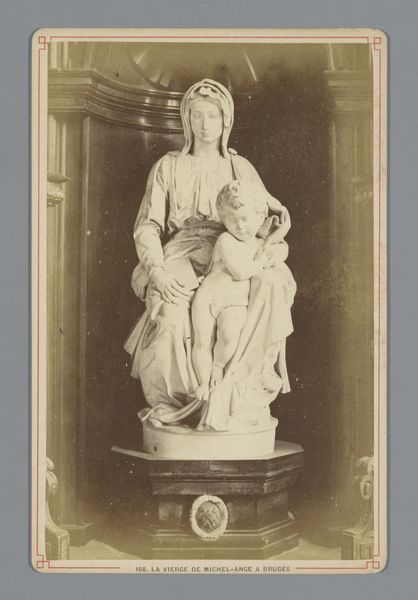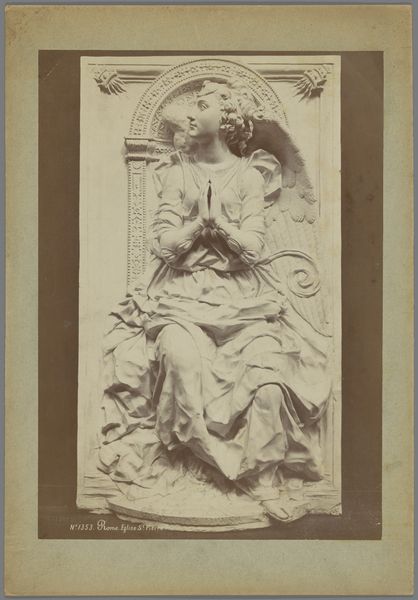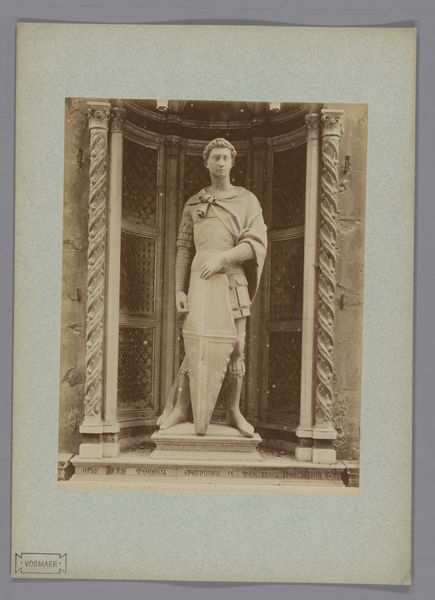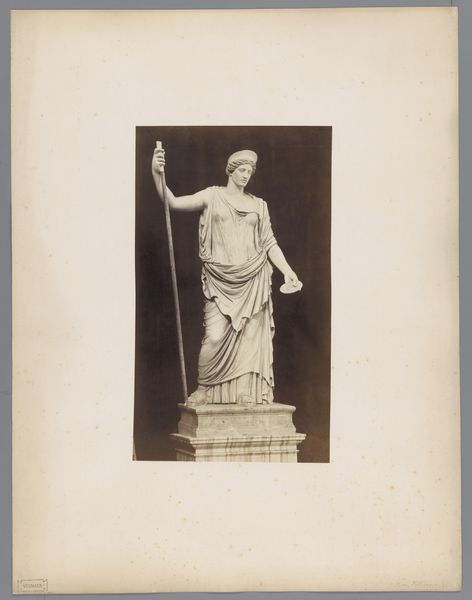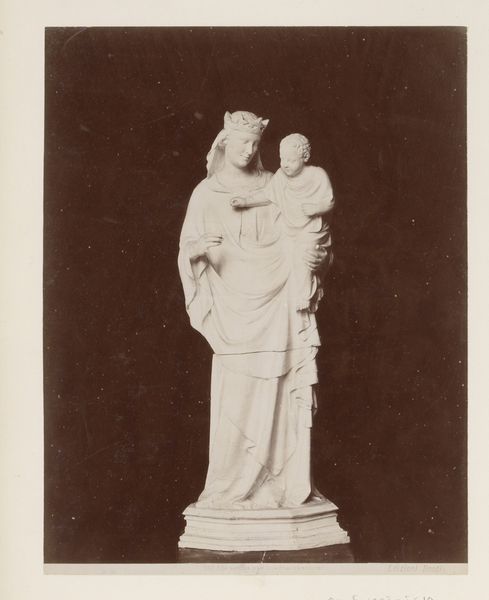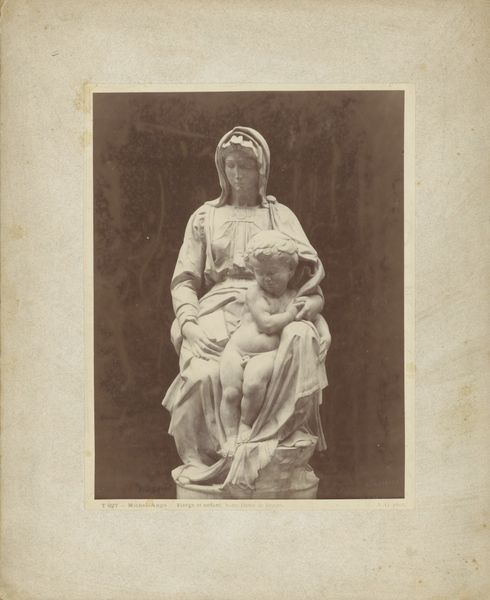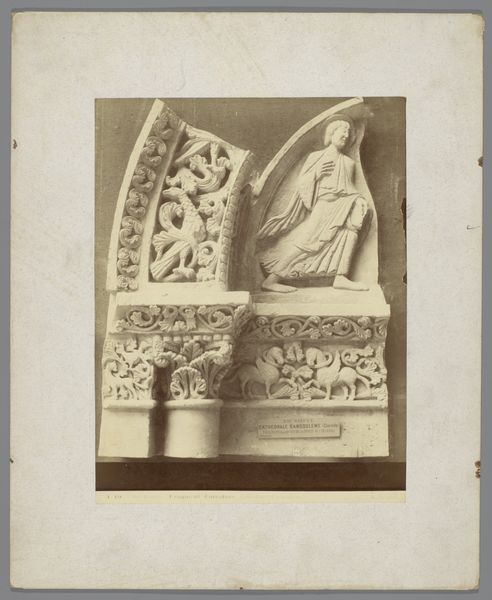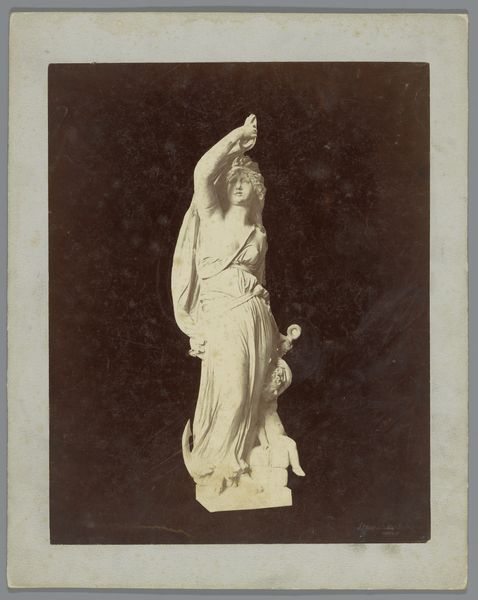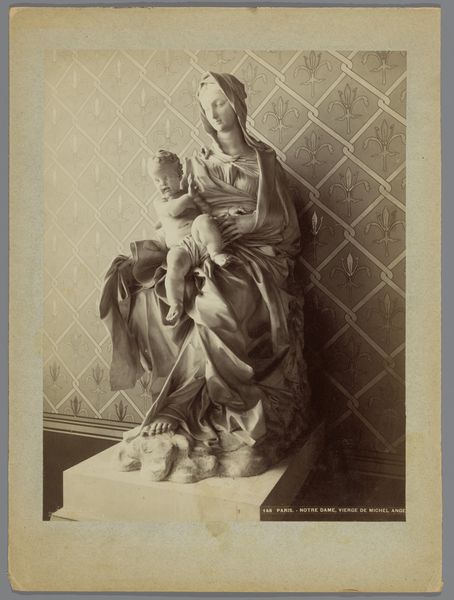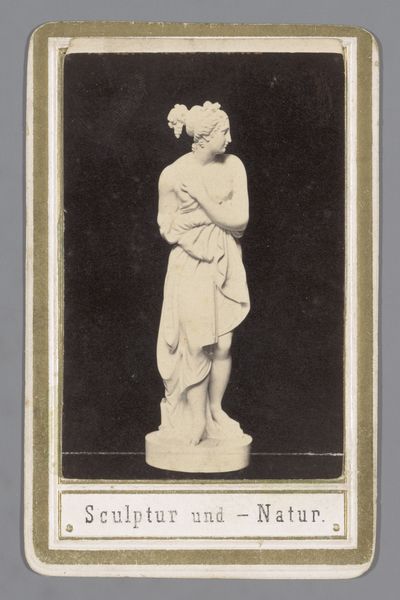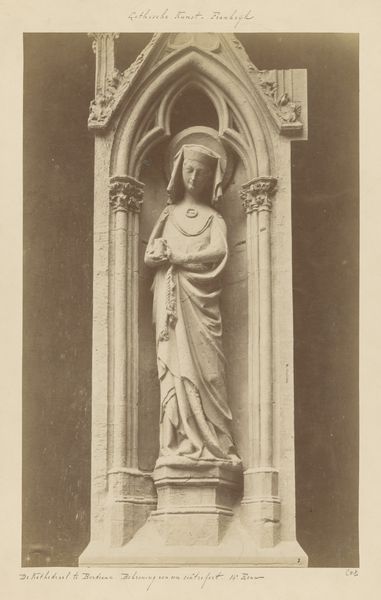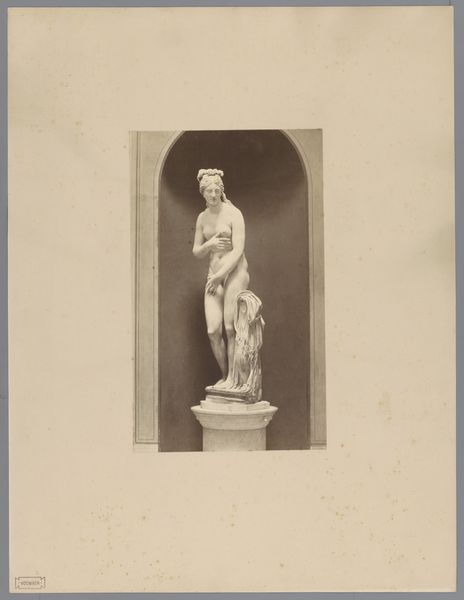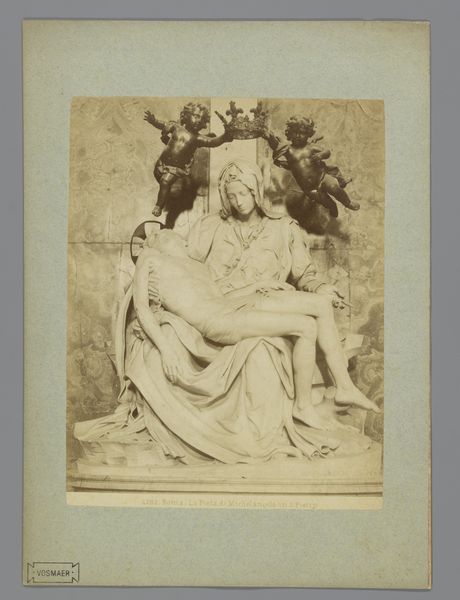
Ivoren beeld van een van de Sybilles van het graf van Philibert van Savoy in het Koninklijk klooster van Brou 1847 - 1887
0:00
0:00
photography, sculpture, gelatin-silver-print, marble
#
portrait
#
photography
#
sculpture
#
gelatin-silver-print
#
marble
Dimensions: height 164 mm, width 108 mm
Copyright: Rijks Museum: Open Domain
Editor: We’re looking at a gelatin-silver print from between 1847 and 1887, titled "Ivoren beeld van een van de Sybilles van het graf van Philibert van Savoy in het Koninklijk klooster van Brou", which translates roughly to "Ivory image of one of the Sibyls from the tomb of Philibert of Savoy in the Royal Monastery of Brou." The image shows a marble sculpture. It feels serene and stately to me. What’s your take, seeing it from a historical perspective? Curator: I find it fascinating to consider how photographs like this one played a role in disseminating knowledge about art and historical monuments. Prior to widespread photography, access to sculptures like this, particularly those in relatively remote locations like the Royal Monastery of Brou, was limited. This image democratizes access, albeit in a mediated form. Think about it – what does it mean for a work designed to commemorate royalty to be reproducible and available to a broader public? Editor: So the photograph itself becomes almost like a political object, by making the sculpture more accessible? Curator: Exactly. The photograph flattens the sculpture, and turns it into something closer to propaganda by making a royal tomb broadly visible. We lose the experience of the tomb’s original architectural context. And who is taking and distributing these images? Whose vision is being circulated, and what are their motivations? This portrait of the sculpture becomes yet another symbol in the power of its patron! Editor: I never thought about it that way, it’s almost like the photo *becomes* a separate piece of art with a whole other layer of meaning on top of the sculpture itself. Curator: Precisely. It’s a potent reminder of how art and its interpretation are always embedded within social and political landscapes. Photography recontextualizes, perhaps even transforms, sculpture into an idea.
Comments
No comments
Be the first to comment and join the conversation on the ultimate creative platform.
